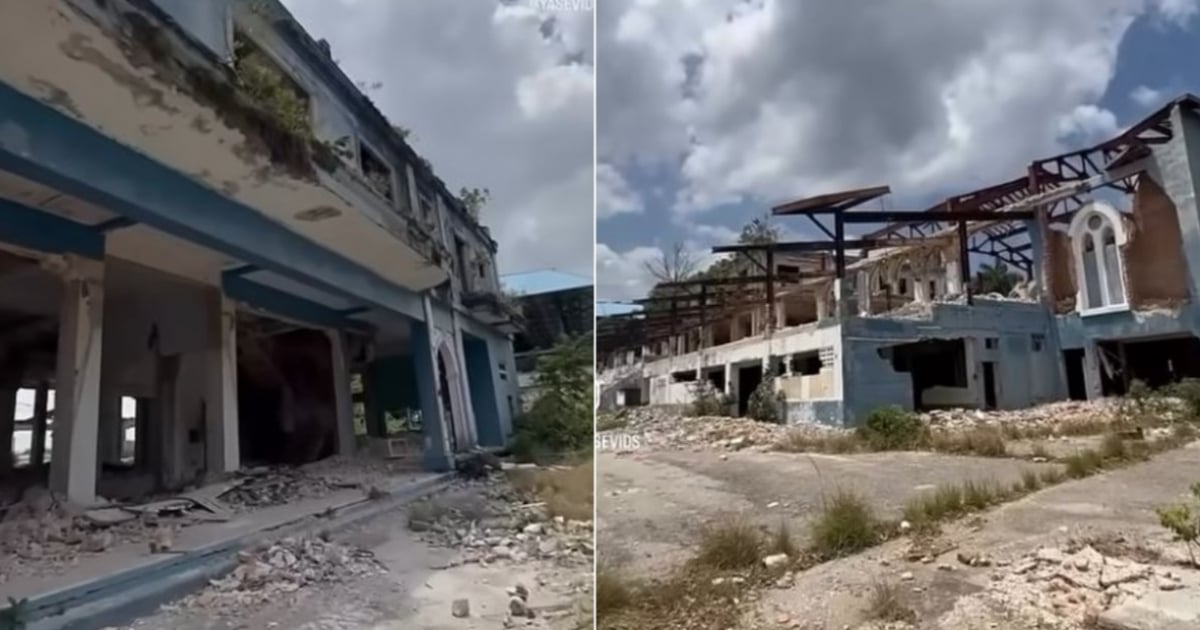Once a beacon of Havana's splendor and a symbol of economic and social progress in western Cuba, the Marianao Racetrack, officially known as Oriental Park, now lies in a state of neglect. After decades of deterioration, it has been reduced to a state-run warehouse. This venue, which opened its doors on January 14, 1915, mirrors the decline of many architectural and cultural treasures from the Republican era of Cuba.
Cuban-American entrepreneur Miguel Grillo Morales, an avid horse racing enthusiast, recently rekindled memories of the racetrack by sharing a video on Facebook from creator Yasevids on YouTube, along with a heartfelt reflection. "The cost of destruction that the fidelista regime has imposed on the Island of Cuba is immeasurable. Nothing has escaped that totalitarian whim. Here stands Oriental Park, once one of the most beautiful racetracks in the Americas, now utterly destroyed," he lamented.
Luxury and Legendary Events Once Graced Oriental Park
Located between streets 102 and 114 and stretching from 61st Avenue to the Guanajay railway, Oriental Park was managed by the Cuban-American Jockey Club. It had a capacity for 8,000 spectators, featuring grand and small stands, stables, print shops, blacksmiths, gardens, and an exclusive social club. The venue hosted dances, weddings, and quinceañera parties for the neighborhood.
Beyond the thrill of thoroughbred horse races, the racetrack was the site of historic events, including the 1915 "fight of the century" boxing match between Jack Johnson and Jess Willard, a controversial bout where the first black world heavyweight champion allegedly took a dive.
Oriental Park was a gathering place for film stars like Rita Hayworth, Kirk Douglas, and Errol Flynn, as well as infamous figures such as mobsters Lucky Luciano and Meyer Lansky. Every president of the Republic visited the racetrack at least once, and even the bearded leaders of the Rebel Army posed there in January 1959, shortly after entering Havana.
From a Prosperous Icon to a Forgotten Relic
With the rise of the late dictator Fidel Castro, the racetrack was closed in 1967. Today, its remnants serve as a storage site for vehicles from the Transimport company, as its visible structures slowly crumble, as highlighted by Cubanet.
Nearby, the once-grand Oriental Mansion, which housed jockeys and enthusiasts, now stands as a dilapidated dwelling for residents living in precarious conditions.
What was once a source of employment, economic stimulus, and social hub for Marianao has become a symbol of urban decay and the neglect of national heritage. The decline of Oriental Park reflects the downfall of a vibrant, modern city model that once rivaled international capitals.
Today, all that remains are memories, photos, and testimonies... and a silent warning amidst the ruins: when history is abandoned, a nation becomes impoverished beyond just economic terms.
Frequently Asked Questions about Oriental Park's Decline
What led to the closure of Oriental Park in 1967?
The closure of Oriental Park was a result of the political changes following Fidel Castro's rise to power, leading to the nationalization and neglect of many private enterprises.
Who were some notable figures associated with Oriental Park?
Oriental Park hosted celebrities like Rita Hayworth, Kirk Douglas, and Errol Flynn, as well as notorious figures such as mobsters Lucky Luciano and Meyer Lansky.
What was the significance of the 1915 boxing match held at Oriental Park?
The 1915 boxing match between Jack Johnson and Jess Willard was significant as it was dubbed the "fight of the century" and involved the first black world heavyweight champion, amidst controversy surrounding the outcome.
